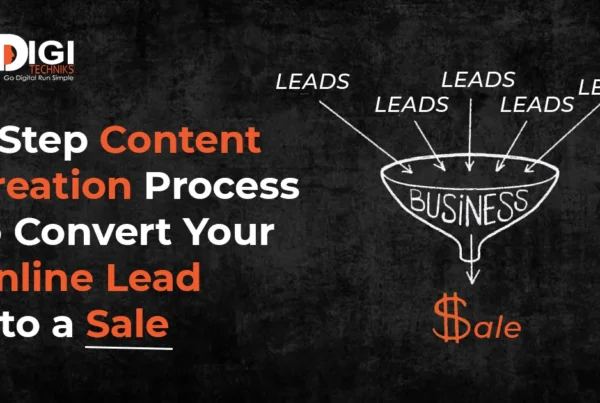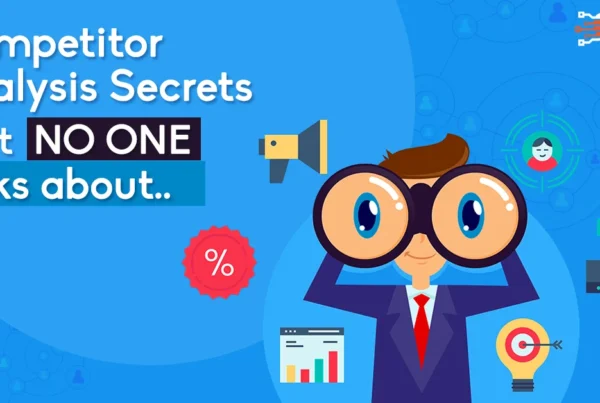
Do you want to use Google like a growth machine?
Do you know that Google Ads are more effective when used with proper strategy?
Are you using Google Ads in a way that gives you the best bang for your buck?
Or, you are simply picking a bunch of keywords and creating your Google Ads around them.
If yes, then it’s a recipe for failure.
Why?
Because while Google Ads certainly work and they can give you nearly-immediate results, running a few ads and hoping to reap massive success from them can lead to disappointments.
For one, this ad-hoc approach won’t give you the results you desire.
You’ll end up wasting time and money on campaigns that probably won’t drive conversions.
And, even if they do, you might not be able to identify which campaigns are showing results and which aren’t.
For instance, you won’t know for sure if a lead or sale you’ve received has been driven by your Google ads or not.
The key to success lies in the right strategy
Most of the business owners fail to succeed because of the wrong strategy when they don’t know the right steps to get results from Google Ads.
While the promise of driving low-cost, highly-targeted, and high conversion campaigns on the world’s most popular search engine sounds lucrative, you won’t get these benefits unless you have a strategy in place.
Like any successful marketing campaign, it all starts with planning. If you’re just getting started with Google Ads, this may seem a bit challenging.
In this article, we’ll walk you through Eight steps to plan out a Google Ads strategy for success.
1. Pick a goal for your campaign
The purpose of this step is pretty straightforward. To pinpoint why you’re creating a particular campaign. This is to ensure your campaign fulfills a specific goal for your business.
Google can make some automatic suggestions for what goals you can choose for your campaign.
It could be getting more leads, more sales, driving more traffic to your website, increasing your brand awareness, and so on.
Related Article– Supercharge Your Leads from Google Ads With These Simple Steps
After you select a specific goal for your campaign, you have the option to tweak it further with features and settings.
While you can add or remove a goal at any point of time, remember that goals also serve as a benchmark for gauging the success of your campaign, so setting up goals is always a great way to start.
2. Finalize the campaign type to achieve the goal
After you set up the campaign goals, it’s time to select the type of campaign you’d like to run in order to fulfill those goals.
Your choice of the campaign will determine where your target customers will see your ads. Also, the settings and options available to you will vary accordingly.
Here are the types of campaigns you can choose from:
Search: These are text ads that help you attract customers who are interested in your product or service.
Display: You can run these ads across the web using images and banners.
Shopping: These are specifically purchase-oriented ads where buying/selling is involved.
Video: These ads use videos to reach and engage viewers on YouTube and elsewhere on the web.
App: These ads are focused on driving app installs across Google’s networks.
3. Identify your target audience
This step involves finding your target audience.
Keywords are at the heart of Google Ads and because these words are used by your target audience while searching for a product/service, it’s critical to determine the right audience.
- Use information such as demographics — age, gender, location and spending habits — to interests and preferences to define exactly who you want to reach.
- Use insights from your existing customer data to refine your audience profile further.
- Identify which stage of the buyer journey they are at for a particular campaign e.g. first-time buyers, existing subscribers, etc.
Google Ads is set up to assist you in selecting the most appropriate ad format and positioning for your audience and your goals. So if you find the process a little daunting, you can let AdWords make some basic decisions for you.
4. Create the keywords list
Selecting the right keywords can make or break your Google Ads campaign.
Some tips to do it right:
- Rather than using general keywords related to your business, decide on 10-20 possible search queries that closely match your campaign.
- Just like in SEO, long-tail keywords help fare better than generic ones.
- The more specific your keywords, the better e.g. ‘women’s sports t-shirts Bangalore’. These types of keywords will improve the targeting of your ads, reducing their chances of being shown to searchers who are unlikely to convert.
- All keywords come with an estimated value; the more popular they are, the lesser chances you have of getting seen on the first page, plus, the more you’ll pay per click. Therefore, focus on lesser-used keywords for better positioning and ROI – Keyword Planner can help with this.
5. Develop your campaign assets
Assets are the elements needed to create ads while running a campaign. These can be banners or images (display ads), video (for video ads), text and landing pages (for search ads), and so on.
Make sure you use appealing texts, headlines and descriptions, eye-catching visuals, and impactful audio to attract and engage your audience.
Your assets should align with the specific goals of your campaigns as well as those of your business.
6. Setting up the conversion tracking
Can you monitor and analyze the actions that visitors take when they land on your website, such as filling out the contact form, subscribing to your email list, or downloading a resource?
Without being able to tie every conversion to your campaigns, it’s difficult for you to track what’s working and what’s not.
This is why it’s imperative that you measure and attribute the conversions to your campaigns. That’s where AdWords conversion tracking comes in.
Setting up conversion tracking is simple and the process begins when you define a conversion goal for your Google Ads campaign.
After you’ve specified your desired conversion action, such as a sale, opt-in or call, you’re on your way to track data. Here’s how you can start tracking conversions:
- Select a conversion source
- Create a conversion action
- Personalize the tracking options as per your goals
- Install the conversion tracking code
7. Create a campaign
Depending on your campaign goals and type, now it’s time to create a messaging for your campaign that’s relevant, engaging, and convincing.
Remember, while creativity can be alluring, what’s more important is to deliver your message in a simple and hard-hitting way that persuades your target audience to take your desired action. After all, the end goal is always a conversion.
To this end, your campaign should not just have eye-grabbing content, but also a strong call-to-action that will guide people to take the next step.
8. Optimize the campaign
Creating a successful Google Ads campaign doesn’t stop with clicking on “run”. After the ad is live, you need to monitor it at least once a week to track progress and make the required tweaks here and there.
Here are some basic metrics you should track:
Impressions – the number of people who saw your ad
Clicks – the number of people who clicked on your ad
Click-through rate – the number of people who were led to your website through the ad
If your ad isn’t performing as it should, you’ll need to optimize it, which means making changes that will drive the desired results. So, if your ad has few impressions, try working with different keywords. If your ad suffers from less clicks, maybe you should reconsider your targeting. Poor click-through? Revisit your copy or messaging. Not getting enough conversions? Improve your landing page.
Related Article– 4 Proven Ways To Reduce Google Ads CPC
Finally, remember that like any other plan, it’s important to be patient and follow-through from time to time to ensure your Google Ads strategy is working at its best.
Hopefully, you’ll find this guide helpful whether your Google Ads efforts weren’t as fruitful as you’d have liked in the past or you’ve just dipped your toes in the world of Google Ads.
Either way, there’s a whole world of benefits you can unlock for your business if you learn to do it right. We have designed a free webinar to guide all business owners while making their search engine strategies.
Related Article– Step by Step Guide To Develop a Search Engine Strategy for Your Business
Do you want to get a personalised 1-to-1 discovery session?
Book your 1-to-1 discovery call with us today!



